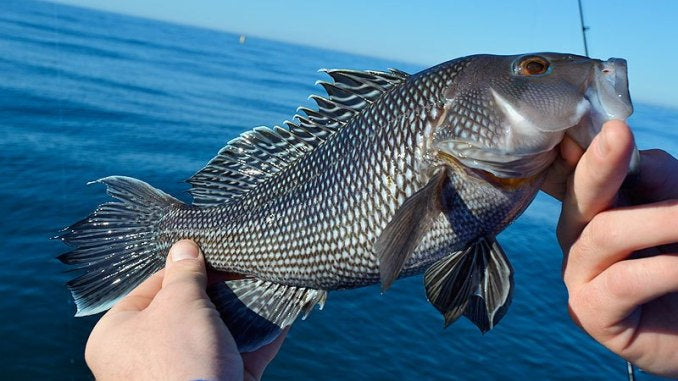
Sea Bass Fishing from a Kayak in NJ
Share
Sea Bass Fishing from a Kayak in NJ This Fall: Mastering Slow Pitch Jigs on Wrecks and Reefs
Fall in New Jersey marks the peak of sea bass fishing, and for kayak anglers, it’s one of the most rewarding times to be on the water. As the waters cool and sea bass move in heavy numbers onto wrecks and reefs, kayak fishermen have a prime opportunity to target them with one of the most effective techniques in recent years: slow pitch jigging.
Whether you’re new to the style or looking to refine your approach, here’s what you need to know to maximize your success this season.
Why the Fall is Prime for Sea Bass
By autumn, sea bass migrate from their summer haunts toward deeper structure in preparation for winter. Inshore wrecks, rock piles, and artificial reefs up and down the Jersey Shore become magnets for dense schools of fish. Not only are the numbers strong, but the average size of fish in the fall tends to be bigger than in the spring opener.
From a kayak, you’re stealthy and close to the action, making it easier to position over productive structure and work jigs naturally without heavy boat traffic spooking the fish.
The Art of Slow Pitch Jigging

Unlike traditional jigging, which relies on speed and erratic action, slow pitch jigging is about subtle rhythm and letting the jig flutter like a wounded baitfish. The lift of the rod and controlled slack on the drop create a presentation sea bass find irresistible.
Gear Setup
-
Rod & Reel: Use a true slow pitch jigging rod paired with a compact, high-quality conventional reel (200–300 size). The parabolic rod action allows the jig to “kick” and flutter properly.
-
Line: Spool with 20–30 lb braid and add a 20–25 lb fluorocarbon leader to handle the abrasion from wrecks.
-
Jigs: Metal jigs in the 20–150 gram range are ideal for NJ’s fall depths (30–150 feet). Slim profiles cut through current, while wider-bodied jigs provide more flutter in calmer conditions.
Technique
-
Drop the jig straight down until you hit bottom.
-
Lift with a smooth, deliberate motion, then let the jig fall freely.
-
Repeat in a steady cadence, working through the lower third of the water column where sea bass typically feed.
-
When hooked up, expect multiple fish following — sea bass are notorious for “wolf pack” feeding.
 Targeting Wrecks and Reefs
Targeting Wrecks and Reefs
New Jersey is blessed with an extensive reef program, and artificial reefs from Sandy Hook to Cape May hold excellent numbers of sea bass in the fall. Wrecks are equally productive, though they often hold fewer, but larger fish.
Key Tips
-
Electronics are crucial: A GPS and fishfinder help you stay on top of structure and mark fish-holding zones.
-
Anchoring or Spot Lock: On a kayak, anchoring over the structure or using a pedal drive to hold position is critical for precise jigging.
-
Respect the structure: Sea bass hold tight to cover. A few feet off target, and you could be jigging in empty water.
Other Considerations
-
Safety First: Fall conditions can be unpredictable — dress for immersion, carry safety gear, and always file a float plan.
-
Bycatch: While targeting sea bass, expect bonus catches of porgies, triggerfish, and even cod on certain wrecks.
-
Regulations: Always check NJ regulations for sea bass seasons, size limits, and bag limits before heading out.
Final Thoughts
Kayak fishing for sea bass in the fall combines the thrill of light tackle, the precision of slow pitch jigging, and the reward of fresh fillets at day’s end. By focusing on wrecks and reefs, refining your jigging cadence, and dialing in your kayak positioning, you’ll not only put more fish in the cooler but also master one of the most enjoyable styles of saltwater jigging.
This fall, don’t just chase sea bass — finesse them with slow pitch jigs, right where they live.

















